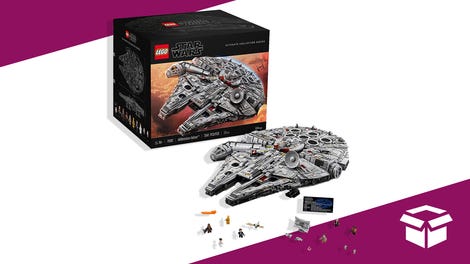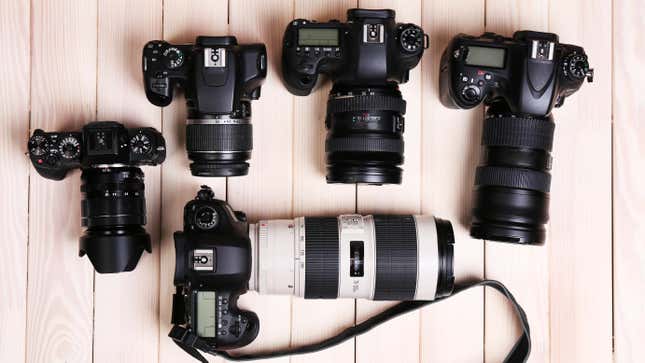
If you’re looking to buy a dedicated camera, you might see the hype surrounding mirrorless cameras and wonder whether a digital single-lens reflex camera is still worth it in 2023. And the answer is: absolutely! While camera tech is shifting toward mirrorless, there are still plenty of amazing DSLR cameras you shouldn’t overlook.
Maybe you don’t have the budget to go mirrorless just yet, or you prefer an optical viewfinder to an electronic one, or just don’t want to swap out your collection of DSLR lenses (or buy adapters for them). No matter the reason, it’s very much still worth buying a DSLR.
The Best Mirrorless Cameras For Video, Beginners, and Low Budgets
DSLR cameras still have the advantage of longer battery life than mirrorless ones, and later models can shoot impressive video that’s nearly on par with a mirrorless camera. Buying a DSLR also means you get the advantage of a larger used market and a wider variety of branded or third-party lens options to choose from.
What Should I Look For In a DSLR?
There are a few things you should consider when making your first (or fifth) camera purchase. What’s your skill level? What are you looking to make with this camera—photos or video or both? What’s your budget? Are ergonomics and the way a camera feels in the hand important to you? Do you already have experience using a particular camera system, and are you willing to switch to another one if you find a great option?
Mirrorless vs. DSLR: What’s The Difference?
In DSLR and early film SLR cameras, a mirror inside the body of the camera reflects light coming in through the lens up into a prism to create the image you see through the camera’s viewfinder. When the shutter button is fully pressed, a mechanism flips that mirror up and out of the way so that light can hit the camera’s image sensor and record the digital image. In film cameras, the light hits and exposes a piece of 35mm film to record the image in the same way.
Mirrorless cameras do away with the mirror and mechanism, leaving just the sensor. Mirrorless camera viewfinders are actually tiny screens that project what hits the sensor to your eye, which is why they’re called electronic viewfinders (EVFs), whereas the ones in DSLRs are optical viewfinders. There are several benefits to this design: you get faster shutter speeds with electronic shutters, lenses with a larger f-stop can be made because the reduced distance between lens and sensor allows for more light, and mirrorless autofocus systems for video are more advanced than DSLR cameras. However:
There are some issues that mirrorles cameras are still working out. A main one is battery life—since mirrorless cameras are basically always in live view mode and always transmitting an image, they use more power and their batteries die more quickly. Leaps and bounds have been made in this area, though, and pro mirorrless cameras have improved battery life today.
Methodology
As a freelance photographer, I’ve shot with DSLR cameras for the past six years, starting with an APS-C camera and eventually upgrading to full-frame. I’ve shot on cameras from the Canon 5DMkIV to my main camera, a Nikon D750. So while I haven’t gotten my hands on every single camera on this list, that experience has informed both what I believe makes a good DSLR camera, and what constitutes a good balance of cost and function.
The DSLRs chosen here are all a good balance of price and functionality for their category. There are beginner options for less than $1K, and pro cameras for more than twice that. What you’ll end up getting depends on personal preference, what you can afford, and what the best tool is for the job you’re going to do.
The Best DSLR Cameras
For first-timers looking to get into photography, this can be a challenging question. Stat sheets can sound impressive, but may not tell you much about how a camera will actually perform in your hands. And honestly, you might not need the most powerful, most impressive-sounding camera you can buy.
When I bought my first camera, I did a ton of research before making my choice. I read reviews, talked to pro photographers I knew, and compared spec sheets. While it’s useful to know what you’re getting, don’t spend too much time overthinking it. As one photographer told me, the difference between Nikon and Canon is like Honda and Toyota; you’re getting a good product no matter what you pick.
Where you buy your gear is also important, especially if you’re buying used, which can save you a ton of money if done correctly. Larger retailers like MPB and KEH are popular choices for used gear, and they’ll also give you a bit of cash for your old stuff. Local and chain camera shops also often sell used gear. Even eBay can be a good place to find a deal if you do the proper research into your seller, but the other options listed here are less work—a lot of camera shops have eBay stores. I bought through Facebook marketplace once, and the transaction wasn’t the greatest, so I tend to avoid it now and would recommend more legitimate options instead.
With all that in mind, let’s get into our list.
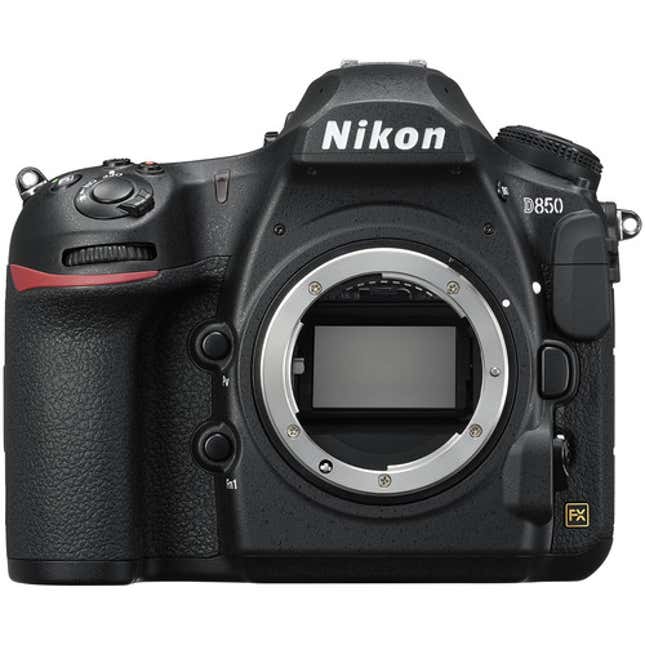
Best DSLR Camera Overall: Nikon D850 — $2496.95
Pros:
- Super high resolution
- High burst rate for fast shooting scenarios like animals/sports
- Weather sealed and solidly built
- Wide variety of pro lenses
Cons:
- Not the greatest for shooting video
If you’re looking for a monster of a DSLR that can handle pretty much any shooting situation you can think of, this is it. Nikon’s successor to the popular D810 has a powerful 45 megapixel sensor, a sturdy weather-sealed magnesium body, and is compatible with a range of excellent brand-name and third party lenses.
Released in 2017, the D850 is a few years old at this point, but still produces excellent images. Its ISO goes down to 64 for impressive dynamic range, allowing for clean images with a lot of room to edit when shooting RAW. It’s also Nikon’s fastest-shooting DSLR according to DPReview, so sports and wildlife photographers will find a lot to like here.
The D850’s high resolution also makes it great for portrait work, both in studio and on-location. It’s got the same large, bright optical viewfinder as the D810—a plus for any kind of shooting.
Even if you’re just starting out or only plan to take your camera on the occasional vacation, this camera is worth investing in if you’ve got a little extra cash, especially if you buy it secondhand. While the body will run you about $2,500 brand new, it’s only around $1,800 used from a reputable dealer. Other DSLRs like the D750, the D780, or the Canon 6D may be better for occasional use or if you want to learn on a camera body with a full size 35mm-equivalent sensor and don’t want to spend quite that much. The D850 also isn’t the most advanced video option Nikon has (we’ll cover that later), though it does still shoot fantastic looking 4K footage.
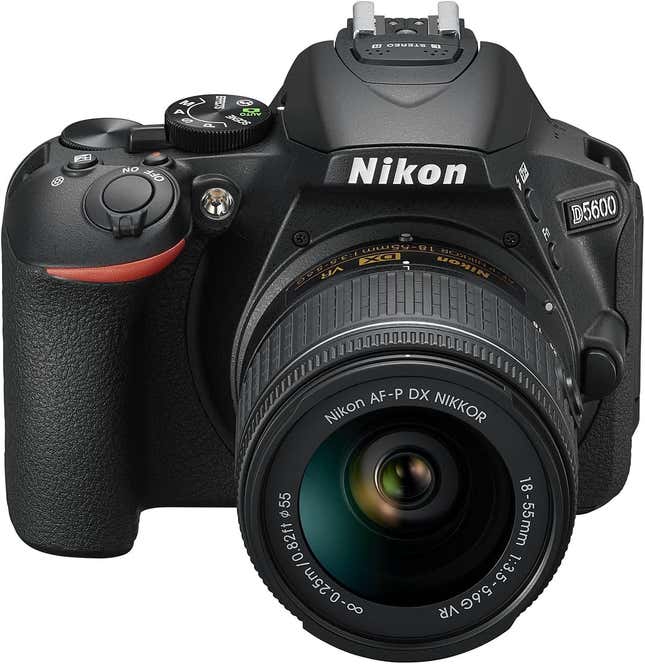
Best DSLR Camera for Beginners: Nikon D5600—$799.95
Pros:
- Great value for the money
- Simple controls and easy startup simplify learning
- Great image quality
Cons:
- Won’t give you the dynamic range of a full frame sensor
- Not as feature-rich as it’s full frame counterparts
While many people would recommend starting on a less expensive full frame camera if you can swing it, there are some great options in the crop sensor market, too.
That’s because cameras with a full-size 35mm equivalent, or full-frame, sensor are what the pros use—they can capture more information for a richer RAW file, which allows for more editing flexibility. Crop-sensor cameras, also called APS-C cameras, still provide very solid RAW files, however, even if they don’t perform quite as well in terms of resolution and dealing with low light. Case in point: the Nikon D5000 series.
The D5600 is Nikon’s latest iteration of its advanced entry level APS-C camera line. At around $800 for the body and kit lens together, this camera also has a flip-out screen—perfect for learning the basics of photo and video on a DSLR. Smaller and lighter than a full frame, Nikon still has plenty of excellent lenses in its DX line that you can pop on this camera for some quality images.
This camera comes with a respectable 24.4 megapixels, around the same as a full-frame camera like the D750. It records 1080p full HD video, has Bluetooth connectivity, and works with Nikon’s Snapbridge app for remote shooting and wireless image transfer. If you go refurbished, it’s even cheaper. I myself started on Nikon’s crop-sensor 3000 lineup with a D3300 before moving to full frame and don’t regret it a bit. And the 5600 is only about $100 more for a starter kit with the camera body and a basic zoom lens.
This is a camera that you can pick up and start making decent images with in a relatively short amount of time. A great option for someone to learn on and lean on until they can upgrade to more professional gear.
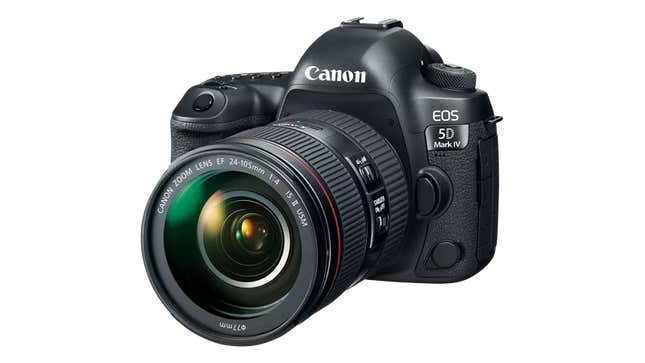
Best Value DSLR Camera: Canon 5D Mk IV_$1 ,635 (renewed)
Pros:
- Good price point for entry level full frame with relatively modern tech
- Tilt-flip LCD screen
- Improved processing speed from the 6D
- Good enough image quality for pro work
Cons:
- Can’t shoot fast enough for things like sports and wildlife
The 5D Mk IV is the latest and final entry in Canon’s flagship DSLR lineup. Released in 2016, it was a monster of a camera and continues to be a workhorse for many pro photographers today. With high-resolution photo and video capability and modern touches like a tap-to-focus touchscreen LCD, this camera represents some of the best of Canon’s DSLR tech outside of its top-tier 1D line.
At just over $1,600 for the body (at least according to one renewed listing), you can get a camera that still delivers pro results for around half the asking price of what it cost when it was originally released. Pair it with Canon’s L lens lineup and you’ve got a camera that’ll still be good for years to come without making you drop a ridiculous amount of cash.
The 30 megapixel sensor paired with Canon’s lenses will easily get you professional looking images fit for delivering to clients, sharing to social media, or making decently sized prints. For video, this camera shoots 1080p HD with Canon’s solid video codec, good enough for something like YouTube or if you’re learning to shoot video. You can also control it wirelessly via Canon’s Camera Connect app if you’re shooting self portraits or recording video footage.
This camera can shoot still images at seven frames per second max, which is fast enough for things like travel photography, portraiture, and most events. If you’re looking to shoot sports or wildlife, though, you’ll want to invest in something faster. All in all, this is a camera that people have built careers on, and it’s a great way to learn pro full frame for less.
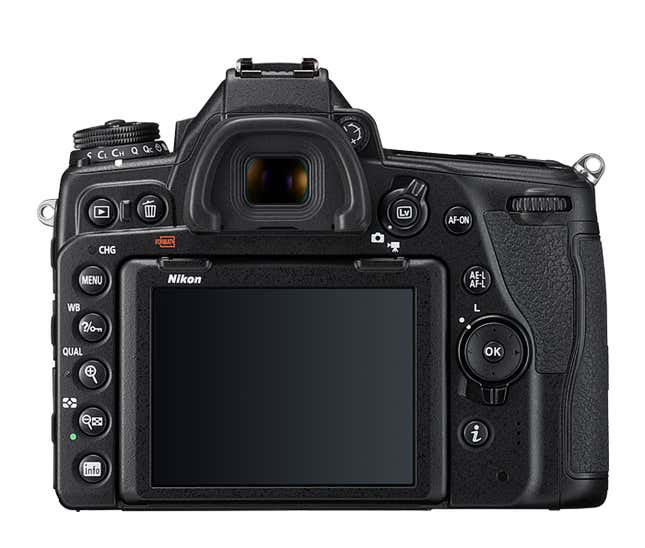
Best DSLR Camera for Video: Nikon D780—$1,649 (renewed)
Pros:
- Image resolution good enough for pro work
- The same autofocusing system as the Z6
- No-crop 4K video
- Great price for its feature set
- Eye-detection AF in live view mode
Cons:
- Not as powerful as higher-level offerings like the D5
Nikon’s D780 is the long-awaited follow up to the company’s much-loved D750, a camera considered a dependable all-around workhorse by many pro photographers. Released in 2020, it’s the newest DSLR on this list.
The D780 delivers everything people loved about the D750, with some noticeable improvements. On the video front, it has basically the same autofocusing system as Nikon’s mirrorless Z6 camera when in live view mode. That means eye and face tracking as well as some of the best live view autofocus you’ll find in a DSLR—it’s basically a Z6 with an optical viewfinder. If you’re a portrait photographer looking for your first serious DSLR, this is worth a look.
The D780 can switch between still and video shooting with nearly zero buffer, making it great for hybrid shooters that need to toggle modes on the fly. Wedding shooters, for example, will get a lot out of this camera. It also shoots 4K video without cropping the image.
Add to that a durable, weather-sealed body, and this camera could easily be your new all-rounder, not just for video. For a thorough technical breakdown of how it fares against Canon’s 5D MkIV and the mirrorless Sony A7III, check out this video from The Slanted Lens.
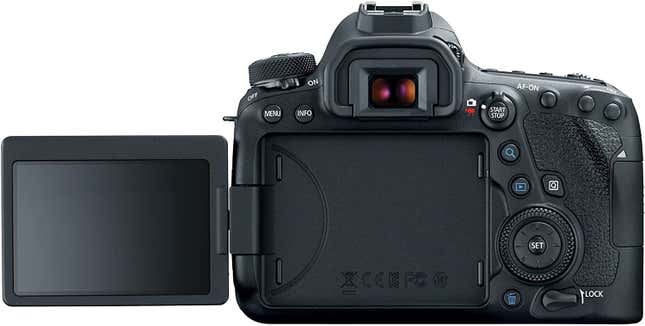
Best DSLR Camera for Travel: Canon 6D Mk II—$894 (used)
Pros:
- Compact and easy to carry for a DSLR
- Good stills, decent video
- Easy to use
Cons:
- Slow autofocus, especially for full-frame
- Not the greatest video codec
This camera’s balance of price, compact design, and features make it not only a great budget camera but a good travel shooter. Easy to pack away but still having enough power to produce fairly data-rich RAW files, the 6D II would make a lot of sense to take on your next trip.
This is a camera you can put a 35mm lens on, set to auto, and shoot your heart out even if you don’t know the finer points of DSLR shooting yet. The video codec isn’t as good as other Canon DSLRs, like the 5D series, but it’s an attainable full-frame for those who might otherwise be priced out of the market.
One caveat: the autofocus on this camera is pretty slow, and all the autofocus points are in the center of the frame. For faster shooting or trying to catch something in focus at the edges of your frame, it can get cumbersome.
If you can afford it, you could spring for something like the Canon 5D MkIV instead. It’s larger than the 6D II but more feature rich, has better autofocus, and takes better HD video.
And that’s going to wrap up this list of the best DSLR cameras. If you need a good alternative to a mirrorless camera, or just don’t want to make the leap yet, there are plenty of great cameras out there to choose from. I myself still shoot on a D750 DSLR.
Bottom line: The best camera for you is the one that suits your needs and style of photography the best. If you’re completely new to photography, you’ll be just fine with something of reasonable quality that’s fun to learn on.
Know your budget, know why you’re buying a camera, and do your homework within those parameters. If you can, rent your top two picks and try them out firsthand. Then, get the one that makes the most sense for you — not the one everyone tells you to buy.

